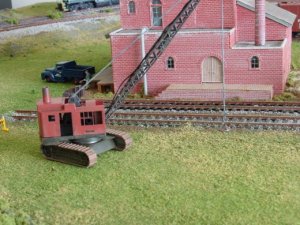In a number of cases, I have found it very difficult to go exactly to scale, whether it is textures - rivets, roofing, etc - or dimensions - e.g. scale lumber vs. matches.
How many of you find that being to scale is more important than the "look and feel" (I would think that superdetailing locos is one area where it is essential to get it "just right")? On the flip side, are there instances where being to scale just doesn't look right, and/or doesn't matter? How much oversize or undersize is ok before it is really noticable?
Any comments?
Thanks!
Andrew
How many of you find that being to scale is more important than the "look and feel" (I would think that superdetailing locos is one area where it is essential to get it "just right")? On the flip side, are there instances where being to scale just doesn't look right, and/or doesn't matter? How much oversize or undersize is ok before it is really noticable?
Any comments?
Thanks!
Andrew


